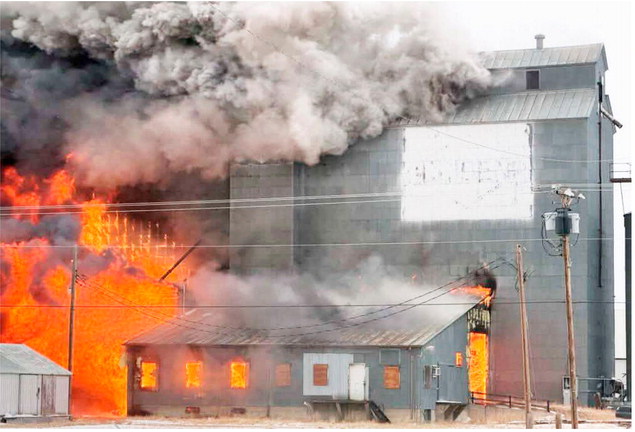Fish, Wildlife And Parks Opens Hunting Forecast
Are you ready for hunting season? FWP can help. In addition to the following hunting forecast, FWP provides online information about hunting access, including our popular Block Management Program. Through the program, we coordinate with landowners to provide hunting access to more than 7 million acres of private land.
The interactive Hunt Planner map allows users to look at information for various species, including hunting districts and regulations. The hunt planner interactive map is a great way to access our block management information, so if you’re planning a hunt in a certain area, you can see if there are Block Management Areas available to expand your opportunity.
As a reminder, many hunting districts have changed. Don’t assume the HD you have hunted for the last several years is the same as it used to be. Double check the regulations to be sure. And, as always, you can contact our helpful staff at any of our regional offices around the state. They’re happy to help and can often get you pointed in the right direction with just a few simple tips.
Elk surveys in the Missouri River Breaks in 2022 were 43 percent below the long-term average, from 1995 to 2022. The 2021 elk survey in the Bears Paw area was above the 2019 survey and over twice the 15-year average. Most elk hunting opportunities are allocated through limited permit or B License drawing in the region, except for HD 690, where general licenses are valid for antlerless elk during the general season. A few districts where elk habitat and numbers are very low and difficult to find offer either-sex harvest on a general license. Please see the current hunting regulations to learn more.
White-tailed deer densities saw a decline following another significant epizootic hemorrhagic disease that occurred mainly on the eastern portion of the region in the Culbertson area along the Missouri River.
“Scattered pockets of EHD were also observed along the Milk River from Glasgow to Malta and out on the prairie habitats in the eastern portion of the region,” added Williamson.
The 2022 survey showed white-tailed deer density averages of 7.3 deer-per-square mile across the deer trend areas, which is 31 percent below the long-term average of 10.6 deer-per-square mile.
Mule deer populations are above average across much of the region but vary depending on the hunting district. Overall, numbers during spring surveys showed the region-wide population at 31 percent above long-term average. Generally, mule deer populations remain above average in the eastern third of the region as well as the areas north of Highway 2.
Ryan Williamson, Outlook- area biologist, said, “The winter of 2021-2022 was generally mild and favorable for wintering deer. No significant mortality events were reported in the region for mule deer.” Williamson added the favorable winter, combined with already high deer numbers observed over the last few years, has led to numbers remaining above average across much of the region.
Antlerless whitetail B licenses will again be available for over-the-counter purchase, with a limit of four per hunter. These licenses are valid across all of Region 6 to allow hunters to use the license where whitetail numbers may be higher. Antlerless mule deer B Licenses remain at high levels, and there may be surplus tags still available in some districts.
In general, pronghorn populations have been slowly increasing the past 10 years across the region from historic lows in 2011. While some survey areas have observed increased numbers and are at or above their long-term averages, there are still a few areas where pronghorn are still below their long-term average, mainly in the Havre area.
Total numbers have increased from last year, with populations near levels observed in 2020 (prior to the 2021 region-wide drought) and similar to population levels observed prior to the winter mortality in 2010-2011. Buck ratios are at average levels (46:100), and fawn ratios remain below average, likely due to drought conditions. Moderate numbers of pronghorn licenses were distributed through the drawing system, and those who have drawn licenses should have a good opportunity to harvest a pronghorn.
The 2022 upland game bird forecast for Northeast Montana is as follows: Pheasant hunting on the Ninepipe Wildlife Management Area near Ronan and surrounding area could be challenging this year. Despite good grain production and some opportunistic moisture in the spring, brood survival appears to be relatively poor.
Habitat conditions in Northeast Montana, spring adult populations and recent brood observations start out slightly above average in the eastern third of the region but decline to the west. The western portion of the region remains in severe drought conditions for the second year in a row. This has negatively impacted vegetation throughout the season and has likely led to a decrease in nest and brood success of all species. The center of the region, Phillips and Valley counties, saw marginally improved conditions this hatching season and were briefly out of drought status in July. Bird populations in this area of the region are expected to be slightly below average. The eastern portions of the region all received better precipitation this year and habitat conditions steadily improved from early May through July. As a result, bird populations are expected to be stable in this area and similar to last year, around average or slightly above average.
A grasshopper outbreak has infested much of the region for the second year in a row. While precipitation has improved vegetation conditions in the eastern two-thirds of the region, grasshopper damage has impacted the quality of the cover again in many areas. However, these grasshoppers also provide a valuable food source for game bird chicks, so the overall impact to upland bird populations depends on the local area. From check station and wing barrel data, we observe that juveniles (birds hatched that year) typically comprise most of the birds harvested (60 to 80 percent depending on the species). Where drought conditions have persisted in the region, hunters will likely find lower juvenile numbers on the landscape and will have to cover more ground and seek out “good” habitat conditions to be successful.
Spring “crowing” surveys that measure the rooster pheasant populations in the eastern third of the region showed populations around average or slightly above average, with populations in the western third of the region well below average. The center of the region falls in between these two, with pheasant populations starting the year slightly below average.
Brood success will be low in areas hardest hit by the drought and improve eastward. The areas that received good moisture throughout the early brood-rearing season in late June into July will have the greatest brood success and best pheasant numbers this fall.
In Region 6, gray partridge (also known as Hungarian partridge) populations are not monitored through any structured surveys, but harvest estimates show their populations do track with the other bird species in the region to some degree. Partridge harvest in 2021 was above average in the eastern portions of the region but 60 percent of average in the western portions of the region, which was still a significant improvement over the previous five years. Overall, partridge numbers this fall are likely to remain average to above average for the eastern half of the region, and below average for the western half of the region. Gray partridge is almost always the least numerous of our game birds in the region, and as a result, are unevenly distributed on the landscape. Even where numbers are good, hunters may need to try many areas of suitable cover to find coveys. The effort to find suitable cover may increase substantially in the drought stricken western portions of the region this year.
Based on spring survey data, sage-grouse populations are in decent shape in Region 6. In the central and western portion of the region, where sage-grouse habitat exists, adult numbers were slightly above average in Valley County, but below average in all areas to the west. While sage grouse appear to tolerate drought conditions somewhat better than our other game birds, the continued dry conditions, especially in the far-western portions of the region, may impact sage grouse production this year. Conditions in the center of the region may be more favorable and sage grouse numbers are likely to be similar to last year this fall. Core sagegrouse habitat primarily exists south of Highway 2 and is composed of mixed grass and Wyoming big sagebrush rangeland. Drought has likely impacted brood success, especially in areas lacking riparian areas. Hunters should expect to find better numbers of sage-grouse in areas containing some riparian habitat.
Grouse hunters headed to Region 6 will likely encounter sharptail populations similar to the fall of 2021. Adult spring surveys ranged from above average in the eastern half of the region to below average in the western half of the region. Due to the drought conditions, juvenile numbers will be down in the western areas and subsequently decrease overall numbers and harvest. In the eastern portions of the region, sharptail numbers are expected to be fair to good. Brood success in eastern areas appears to be good in areas that received precipitation in spring and early summer.
Although most hunters respect the land, property, and wildlife they are hunting, a minority do not. Yet these few bad actors lead to frustration from private landowners and hunters looking to do things right. This year remember: It’s up to us. Protect access. Respect the hunt. Avoid hunting, walking or driving in fields that have not been harvested yet Completely fill out BMA slips: If a hunter doesn’t correctly fill out a block management slip, they are hunting without permission.
Access to public lands (on a private road) through private land requires permission of the private landowner, lessee, or their agent. Camping is allowed on most public lands (see agency regulations), but permission is needed to camp on private property and BMAs. Know the rules: Consult BMA maps for specific rules on block management property.
Also remember the fall is a very busy time for landowners. Along with late harvest, cattle and other livestock are being moved from their summer and/or fall pastures and are often brought near the home site for winter feeding and care. Please use common sense and respect when around these activities.
Ask first to hunt on private land. Don’t wait until it is too late. Hunters who haven’t already asked permission from private landowners to hunt need to do so as soon as possible. Montana law requires hunters to obtain permission for all hunting on private land. Whether pursuing upland game birds, coyotes, gophers or any other wildlife, hunters must have permission from the landowner before hunting on private property. This also includes entering private land to retrieve wildlife or to access public land to hunt. Landowners may grant permission in person, over the phone, in writing or by posting signs that explain what type of hunting is allowed and under what conditions hunting may occur on land owned or controlled by the landowner. Ask early, don’t wait. Montana’s millions of acres of private land offer some excellent hunting opportunities—the only catch is gaining the landowner’s permission to hunt. It is Montana law that hunters obtain landowner permission to hunt on all private land. For more information on hunting access in Montana, check out the “Hunter Access” pages on FWP’s website at fwp.mt.gov.

